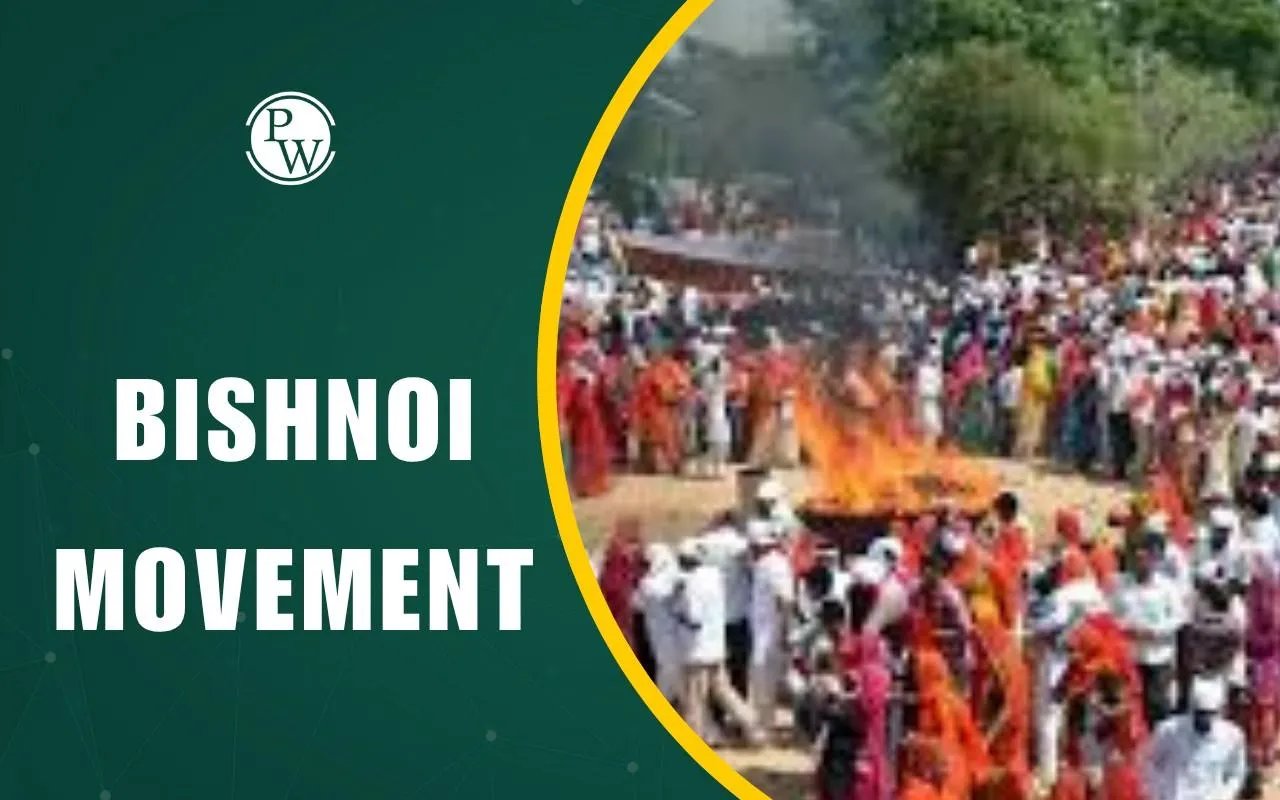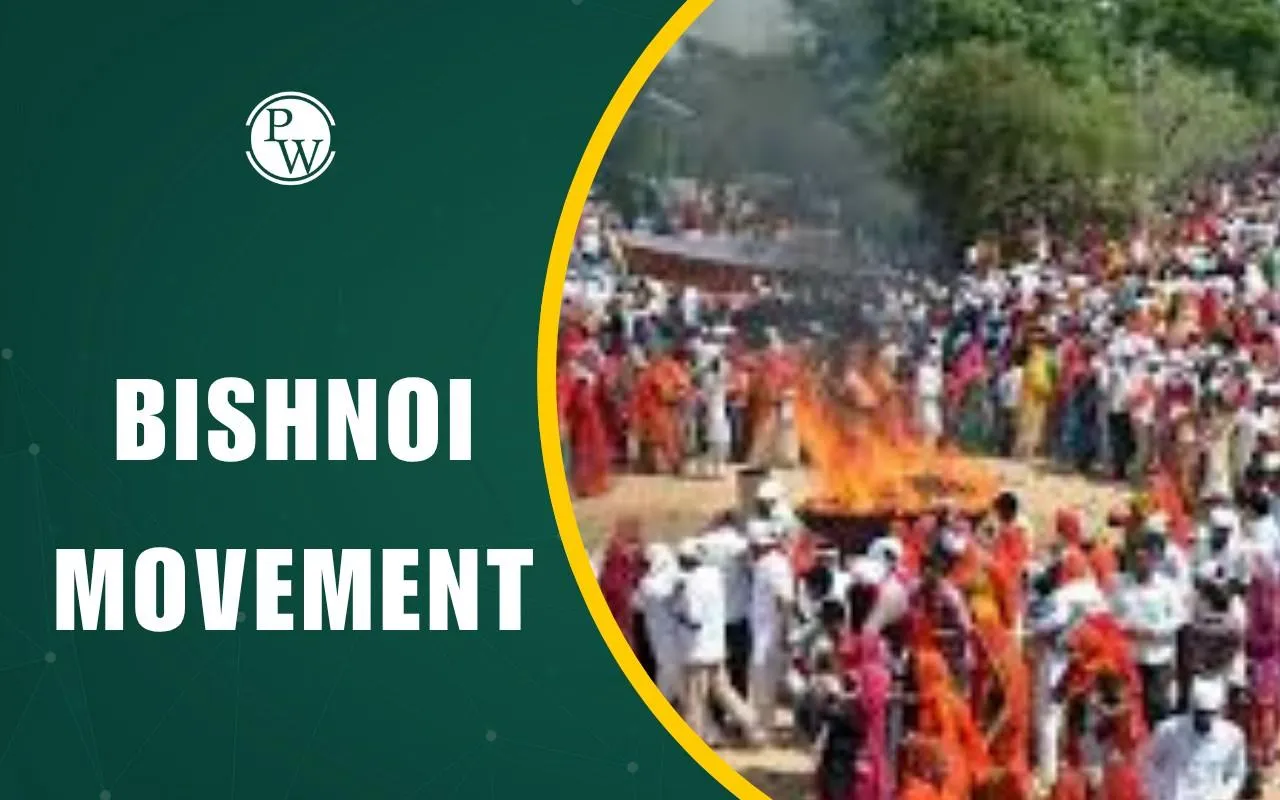

Bishnoi Movement is one of the earliest examples of environmental protection in India. It demonstrated how ordinary people can fight and sacrifice their lives to save nature, trees, and wildlife. The movement was famous for the courage and sacrifice of the Bishnoi community in Rajasthan. The community believed in protecting trees, animals, and natural resources.
The Bishnoi Movement was not only about saving trees. It also teaches respect for life and the environment. Several environmental protection and conservation movements look up to the Bishnoi community for their dedication to environmental conservation.
Historical Background of Bishnoi Community
The Bishnoi community was founded in 1485 by Guru Jambheshwar, also known as Guru Jambhoji. He was a spiritual leader who wanted people to live a simple and disciplined life.
-
He gave twenty-nine rules, or “Bishnoi,” to his followers. The word Bishnoi comes from “bish” meaning twenty and “noi” meaning nine. These rules were made to protect nature, wildlife, and human life.
-
The Bishnois lived mainly in the Thar Desert and nearby areas in Rajasthan. They depended on farming and livestock.
-
As they lived close to nature, they understood the importance of forests and water. This deep connection with the environment made them willing to fight for its protection.
-
The Bishnoi community’s commitment to nature was put to the test during the 18th century when rulers wanted to cut trees for building projects. This led to the famous Bishnoi Movement, showing the courage of ordinary villagers.
-
Some of the key teachings of the Bishnoi community include the following:
-
Protecting trees and plants.
-
Caring for animals and birds.
-
Avoiding waste and pollution.
-
Leading a life of honesty, compassion, and discipline.
Chipko Movement of Bishnoi
The Chipko Movement of the 20th century was inspired by the spirit of the Bishnoi community. “Chipko” means to hug or cling. People literally hugged trees to stop them from being cut down.
-
The Bishnois’ sacrifice in the 1700s influenced this movement. The Chipko Movement took place mainly in Uttarakhand and Himachal Pradesh in the 1970s. Villagers, mostly women, stood around trees to protect forests.
-
The connection between the Bishnoi community and the Chipko Movement is clear: both fought for forest conservation. They both showed that ordinary people could protect nature without weapons.
-
Today, the Chipko Movement is seen as a continuation of the Bishnoi philosophy. It also inspired environmental awareness programs across India.
Key Events of Bishnoi Movement
The most famous event of the Bishnoi Movement is the Khejarli Massacre of 1730. This event shows the extreme dedication of the Bishnoi people to protect trees. These actions helped the Bishnoi community maintain ecological balance in their region.
-
In 1730, the Maharaja of Jodhpur wanted to build his palace. He ordered the cutting of 5,000 Khejri trees in Khejarli village.
-
The villagers protested because cutting the trees violated their beliefs.
-
Amrita Devi, a brave woman, hugged a tree and said, “Cut me first, then the tree.” She and many villagers were killed while protecting the trees.
-
More than 360 people sacrificed their lives, men and women, old and young.
-
Their sacrifice sent a strong message to the rulers. The king eventually stopped the tree cutting.
Leaders and Prominent Figures of Bishnoi Movement
Bishnoi Movement had several leaders and brave individuals. These figures inspired not only their own community but also people across India and the world. They are often cited in environmental studies and history books as examples of selfless dedication. Some of them are:
-
Guru Jambheshwar (Guru Jambhoji) – The founder of the Bishnoi community. He taught people to respect all forms of life and protect the environment.
-
Amrita Devi – A courageous woman who became a symbol of sacrifice during the Khejarli Massacre. She is remembered for her words, “Cut me first, then the tree.”
-
Other Bishnoi villagers – Men, women, and children of the community who stood together to protect trees and wildlife. Their collective action showed great unity and bravery.
Impact and Significance of Bishnoi Movement
The Bishnoi Movement had a lasting impact on society, the environment, and future generations. The Bishnoi Movement remains relevant today, as India faces deforestation, climate change, and water shortages. The principles of the Bishnoi community can guide modern environmental efforts.
Environmental Impact
-
It saved thousands of trees in Rajasthan.
-
It helped preserve local wildlife, including blackbucks and chinkaras.
-
It created awareness about the importance of forests, water, and plants.
Social Impact
-
The movement strengthened community unity.
-
It empowered women and children, who actively participated in protests.
-
It encouraged people to respect nature as a part of their culture and religion.
Historical and Cultural Significance
-
The Khejarli Massacre became a symbol of environmental sacrifice.
-
Bishnoi values inspired later movements like the Chipko Movement.
-
The community’s commitment to nature is studied in schools, colleges, and environmental programs.
The Bishnoi Movement is a story of courage, sacrifice, and love for nature. The Bishnoi community, guided by Guru Jambheshwar, showed the world that protecting trees, animals, and water is worth risking life. From the Khejarli Massacre to inspiring the Chipko Movement, the Bishnois taught the importance of ecological balance. Their actions saved forests, preserved wildlife, and set an example for generations.
